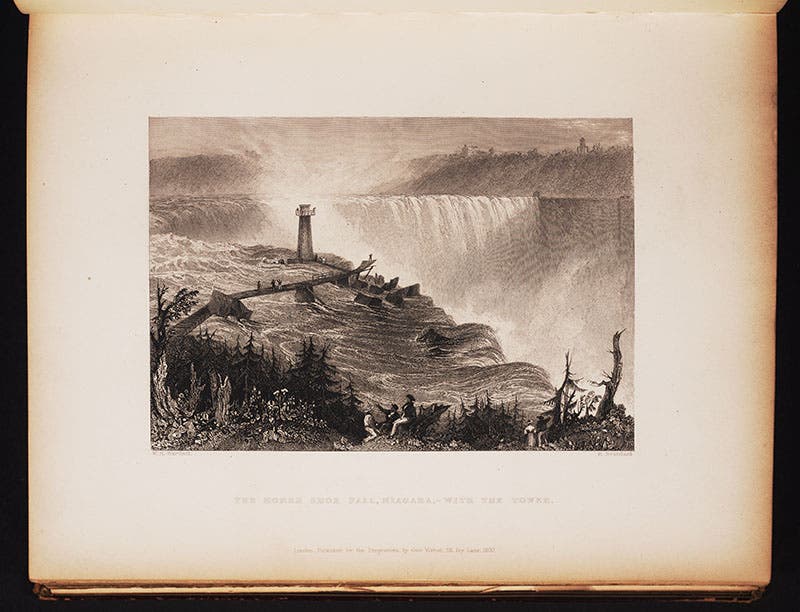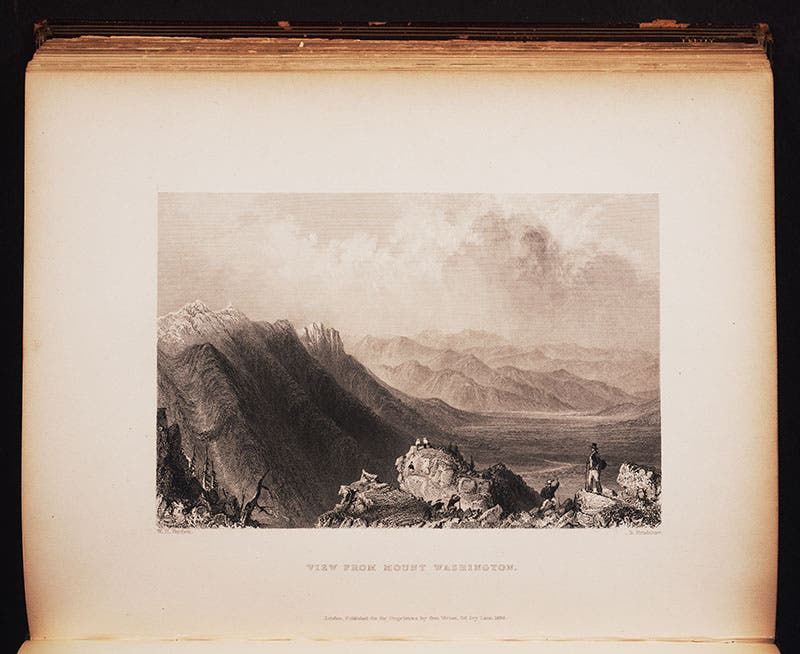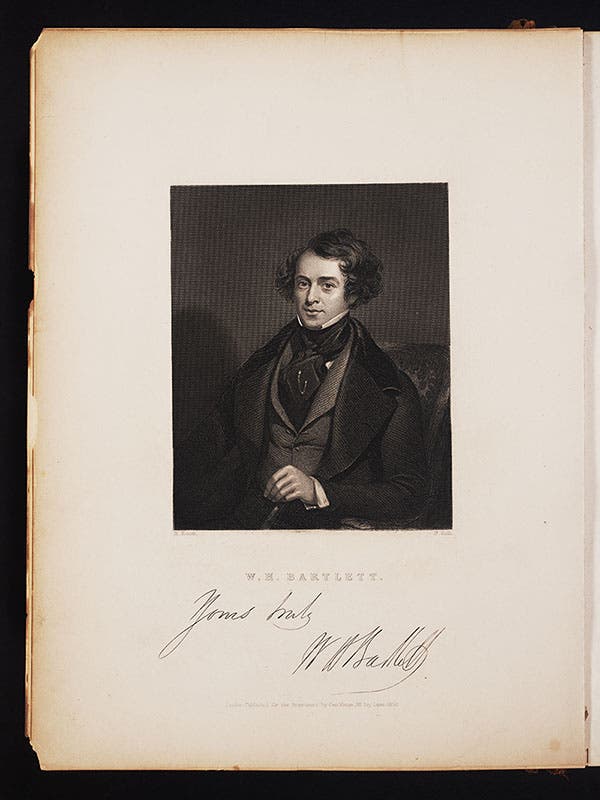Scientist of the Day - William Henry Bartlett
William Henry Bartlett, an English artist and print maker, died Sep. 13, 1854; he was 45 years old. He came to the United States in 1835, sent by the London publisher George Virtue to sketch the scenery of the former colonies, the drawings to be turned into prints and sold by subscription. Bartlett seems to have been partial to the Hudson River; waterfalls of any kind; Boston; George Washington; Washington, D.C.; and the White Mountains in New Hampshire, if the published prints are any indication. Bartlett's sketches were turned into steel engravings by a variety of burinistas, and after the two-year subscription run was over, the plates were issued as a book in 1840: American scenery; or, land, lake, and river illustrations of transatlantic nature, with text by Nathaniel P. Willis.
We happen to have this two-volume set in our History of Science Collection. The prints are finely detailed and wonderfully executed. Most have little to do with science or nature. However, we found a few that might impress historians of American technology or fans of early portrayals of America's natural wonders, and we reproduce five of them here.
They show, in order: The Erie Canal at Lockport, New York; Natural Bridge in Virginia; Horseshoe Falls at Niagara; the view from Mount Washington; and Mount Auburn Cemetery outside Cambridge, Mass.
We include the print of Mount Auburn cemetery because it was only 5 years old when Bartlett sketched it. The first garden cemetery in the United States, it was founded by Jacob Bigelow in 1831. Although hardly anyone of note was interred there when Bartlett visited, it later became the hallowed ground of choice to many notable scientists, including Nathaniel Bowditch, Louis Agassiz, Asa Gray, Dorothea Dix, B.F. Skinner, Buckminster Fuller, and Oliver Wendell Holmes Sr., to name just a few. It is even more beautiful now that it was when Bartlett sketched it, and well worth a visit.
The sixth print is a portrait of Bartlett, which appeared as a frontispiece to volume 1.
Dr. William B. Ashworth, Jr., Consultant for the History of Science, Linda Hall Library and Associate Professor, Department of History, University of Missouri-Kansas City. Comments or corrections are welcome; please direct to ashworthw@umkc.edu.











